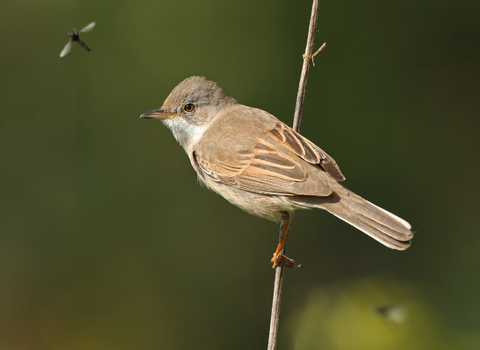
Whitethroat ©Jon Hawkins - Surrey Hills Photography
Whitethroat
The male whitethroat does, indeed, have a white throat! Arriving from Sub-Saharan Africa in April, it can be spotted on grassland and scrub, and along hedgerows. It is bigger than the lesser whitethroat.
Scientific name
Sylvia communisWhen to see
April to OctoberSpecies information
Category
Statistics
Length: 14cmWingspan: 20cm
Weight: 16g
Average lifespan: 2 years
Classified in the UK as Amber under the Birds of Conservation Concern 5: the Red List for Birds (2021).
